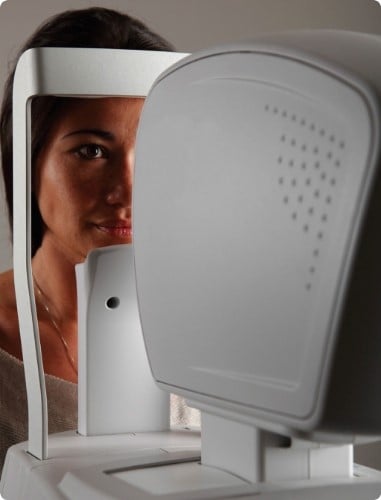Between 2010 and 2050, the number of cases of diabetic retinopathy will almost double, from 7.6 million to 14.6 million, per the National Institutes of Health.
The eye disease is the leading cause of blindness in the United States. While highly treatable if caught early, less than half of diabetics keep up with the recommended annual eye screening.
A
Central Texas multispecialty healthcare clinic, frustrated with the compliance rates of its diabetic patients with its yearly screening appeals, has launched a pilot program to test if embedding
specialized camera technology in primary care clinics would boost screening rates.
Since starting the pilot, Austin Regional Clinic (ARC) has helped hundreds of patients identified with diabetic retinopathy to prevent or treat their eye disease.
According to ARC CEO Anas Daghestani, MD, success has come quickly. He says a major factor in the pilot's success was making it easy to get screened.
"Depending on the stage of their diabetes, patients have several specialist appointments, which can be overwhelming. We're helping to alleviate this by conveniently offering the eye screening during their regularly scheduled physician or lab visit," Dr. Daghestani explains.
The Austin-based facility previously used electronic medical record alerts, mailed letters and made phone calls to encourage eye screenings, yet only 55% of its patients complied with the yearly screening.
EMBEDDED EYE-SCREENING TECHNOLOGY
When a patient's visit with a primary care physician, an image of his or her retina is captured and sent seamlessly and securely across the city to a team of retinal specialists. If deterioration in the retina is detected, the patient is recommended to follow up with an ophthalmologist to review options.
"All people with Type 1 and Type 2 diabetes are at risk for this disease, which means blindness is a real possibility for tens of thousands of persons in the
Austin community,"
says Dr. Daghestani.
Diabetic retinopathy is caused by damage to the blood vessels located in the tissue at the back of the eye (retina). Too much sugar in the blood can lead to damage and leakage of blood of the tiny blood vessels and into the retina, leading to blurry vision or, in the worst case, blindness.
The disease carries few symptoms until it's too late to treat, often when the onset of blindness is near.
"Between 40 and 45 percent of Americans diagnosed with diabetes have some stage of diabetic retinopathy. The rate of blindness is about 2 percent, which means for every 1,000 patients screened, we've prevented 20 people from losing their vision," Daghestani explains. "Excuses like 'I don't have time for another appointment' or 'I'm too young to worry about eye disease' are no longer valid. Diabetic patients in our clinics who have not yet had their annual screening can get one."
Now that's called keeping an eye on one's health.



